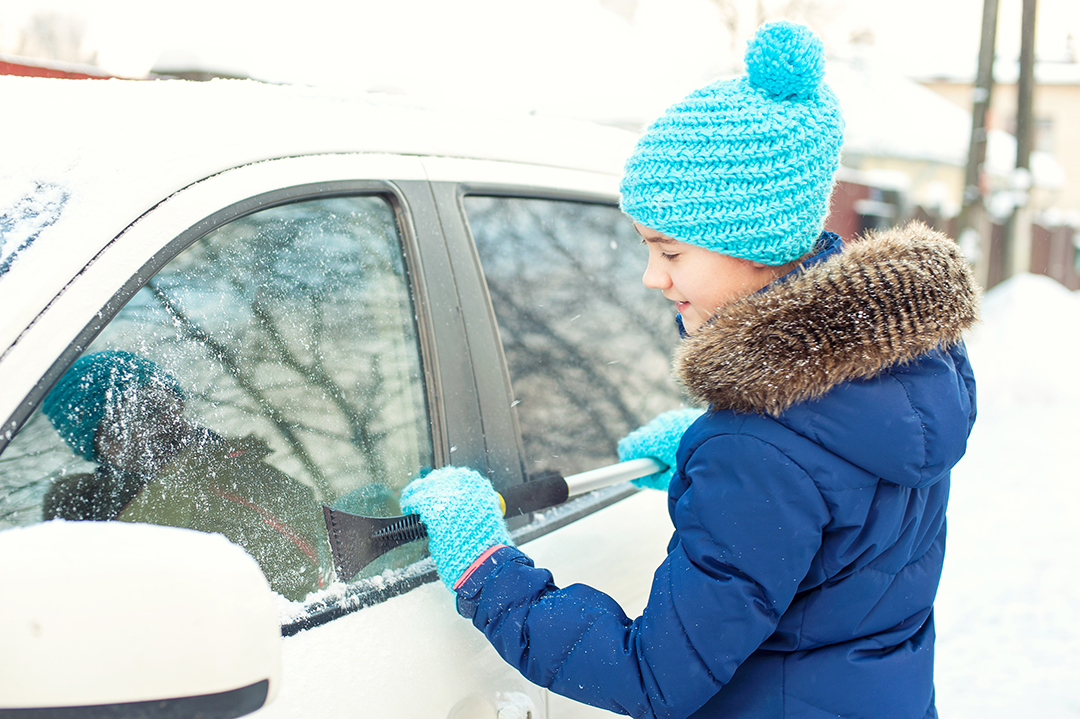Worried about your teenager’s first winter behind the wheel? We don’t blame you. It is scary enough to see your kid take steps toward independently driving. Add winter conditions to the mix, and you have a good reason to be extra worried. So, while some situations are just completely out of your control, is there something you can do to ease your mind… even just a tiny bit? Yes: you can sit down with your teenager to discuss how to handle the situations within their control.
Here are some talking points to get you started:
Discuss the hazards
If your teenager doesn’t know what to look for, how is he or she going to identify hazardous situations before it’s too late? By discussing problematic road conditions with your teen, you can alert them as to what they should be looking out for as they drive. This is an incredibly important conversation to have with your teenager before they hit the road in the wintertime.
Cold
Talk to your teenager about the hazards associated with cold conditions. In cooler temperatures, the road may be ice-free in the sun but could still freeze in the shade. Furthermore, if you’re running summer tires or all-seasons, the rubber may harden at less than 7 degrees and could compromise the traction.
Snow
What are the hazards associated with snow? Getting stuck, being unable to see the road lines, reduced traction, and poor visibility to name a few. Talk to your teen about driving below the posted speed limit if the roads are snow-covered or the visibility is poor. Talk to them about when they should pull over to let others pass. Also, talk about situations where they may be tempted to pass others, and how to make that pass safely.
Slush
Discuss what makes slush so dangerous: slushy roads are commonly associated with poor traction. They can also cause visibility issues with muddy splashes hitting your windshield. Slush can create a very low-traction environment, causing understeering or oversteering, and can even form over ice, hiding it from the view of the driver.
Ice
Ice is a well-known road condition in Canada, and most people have heard of black ice. Still, it’s important to discuss what to watch for with your teenager and explain that black ice is clear and difficult to see. Express the importance of driving slowly in icy conditions and leaving a lot of space between yourself and other drivers. This is a great time to review how to handle your vehicle when you’re in a slide.
Fog
Fog is much more common in winter, so it’s a vital topic to cover in this sit-down with your teen. Go over the headlight functions in your vehicle. Talk about how it’s important to adjust your speed according to the visibility; people, animals or other hazards can seem to come out of nowhere in foggy conditions.
Talk about prevention
Your teenager can now identify many of the risks associated with driving in the winter, but the best way to avoid those risks is to choose when, where, what, and how they drive carefully. You’ll want to talk to your teenager about how to choose the right path to avoid hazards, some steps they may take include:
- Reading the forecast before setting out
- Avoiding nighttime driving in the winter
- Ensuring their vehicle has winter tires (and good tread depth)
- Putting winter windshield wipers on their car and stocking plenty of washer fluid
- Keeping a car emergency kit (include a phone charger!)
- Driving on a familiar route whenever possible
Hopefully, having this discussion with your teenager will help you feel better about their first winter as a driver. You’ve provided your teen with the tools to be safer on the road and to make the decisions to keep themselves (and others) safe.
Our online Teach Your Teen to Drive course has a Winter Driving section specifically for parents of teenagers. It will provide a roadmap to teaching your teen safe driving habits, no matter the season. Click here to learn more!




